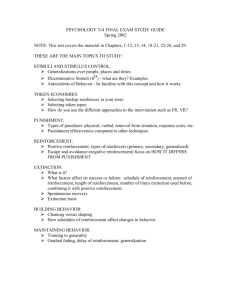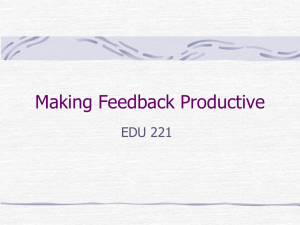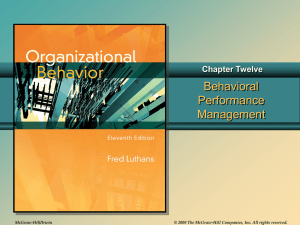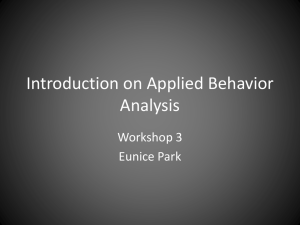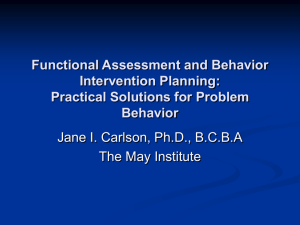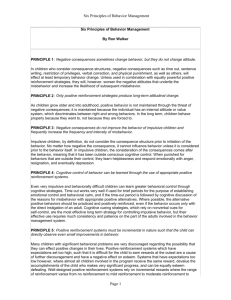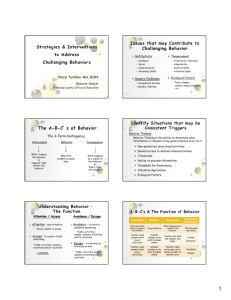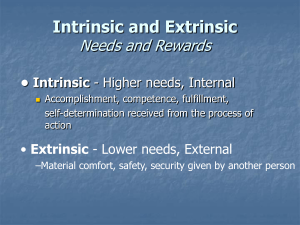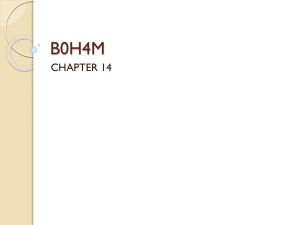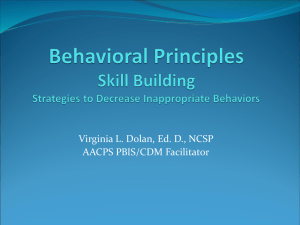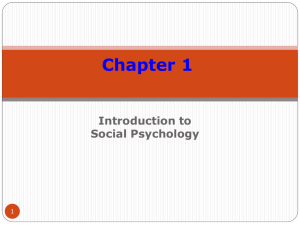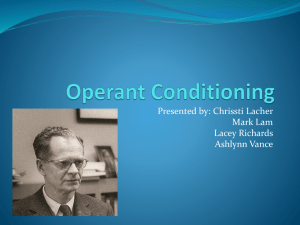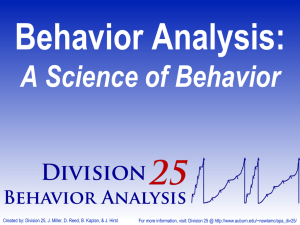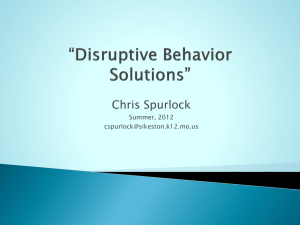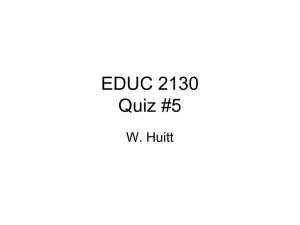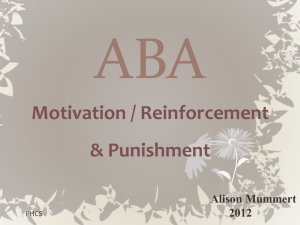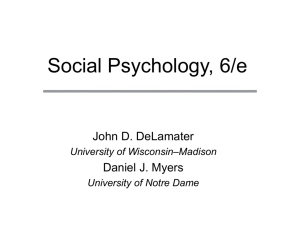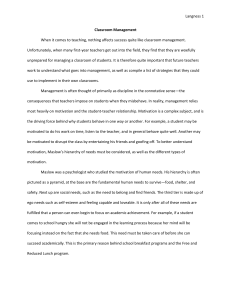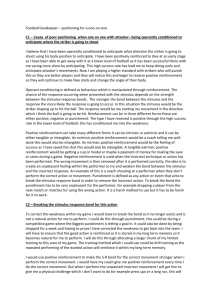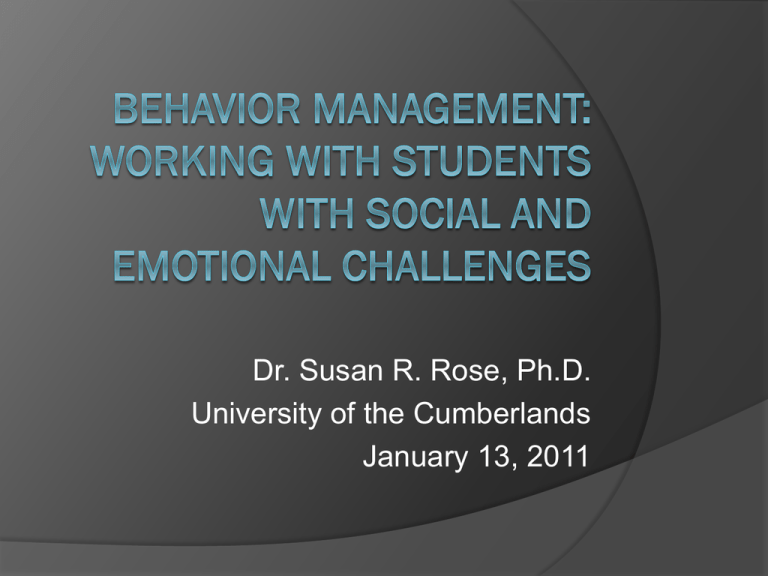
Dr. Susan R. Rose, Ph.D.
University of the Cumberlands
January 13, 2011
No matter how well a teacher knows the subject
matter or how well he or she can teach, a teacher
who cannot manage a class is finished!
So, what can
we do to make
sure that ALL
students within
our reach learn
(and save our
sanity)?
REACH!
Relationship
Enthusiasm
Activity – Multiple!!
Collaboration
Human
Relationship
People don’t
care how
much you
know until
they know
how much you
care!
Maslow’s Hierarchy of Needs
So, where do you think education/school fits in?
People become
really quite
remarkable when
they start thinking
they can do
things. When they
believe in
themselves, they
have the first
secret of success.
- Norman Vincent
Peale
Treat a man as
he is and he will
remain as he is;
treat a man as he
can and should
be and he will
become as he
can and should
be. ~ Johann
Wolfgang von
Goethe
Enthusiasm
Nothing great was ever achieved without
enthusiasm. -Ralph Waldo Emerson
Activity
Over
Plan
Multiple
Intelligences
Attention
Span
Three things you’ve learned so far
Collaboration
Parents
Previous Teachers
Students themselves
Community
Grants
Fund-raising
Many others
Human
Learn from your mistakes
There was only one perfect man
Take
Care of Yourself
Teacher Reflection
Could this problem be a result of inappropriate
curriculum or teaching strategies?
What do I demand and prohibit?
Why do certain behaviors bother me?
Is this behavior developmentally appropriate?
Do I focus on a behavioral excess or a
deficiency?
Will resolution of the problem solve anything
else?
•Rewards
and Punishments
(Behaviorist Theory)
•Lead by Example (Social
Learning Theory)
•Work with the child’s level of
development (Cognitive Theory)
Behaviorist Theory
Based on Theories of Watson, Pavlov,
and Skinner.
Use rewards and punishments to get
desired results and behaviors.
Most frequently used behavior
management strategies for the primary
and elementary classroom are based
on the Behaviorist model.
Positive Reinforcement
A positive reinforcement is a stimulus
that follows an event and increases the
chance of this event reoccurring.
Examples:
○ tangible object (candy, treasure chest, sticker
charts, marble jars)
○ an activity (computer time)
○ something social (playing a game with a
friend)
Negative Reinforcement
Negative reinforcement is taking
something negative away in order to
increase a response .
Examples:
○ Taking away an assignment
○ Lessening an assignment
○ Telling a student they will not have to work on
an assignment during free time if they finish it
in time.
Punishment
Punishment refers to adding something
aversive in order to decrease a
behavior.
Examples:
○ Detention
○ Loss of Privilege
○ Time off of recess
○ Taking money away (in a token economy)
○ Time Out
Extinction
Extinction occurs when one plans to
withhold any reinforcement for a specific
behavior.
The teacher must be consistent with this
method.
Examples:
○ When a child yells out to gain attention, the
teacher (and students) have planned to ignore
this behavior.
What Research Tells Us
Research has found positive reinforcement is
the most powerful of any of these. Adding a
positive to increase a response not only works
better, but allows both parties to focus on the
positive aspects of the situation.
Punishment, when applied immediately
following the negative behavior can be
effective, but results in extinction when it is not
applied consistently.
Punishment can also invoke other negative
responses such as anger and resentment.
Social Learning Theory
Albert Bandura is most famous for
development of this theory (Bobo the
Clown Experiment)
Children learn by observing others and
the modeling of a given behavior
Applying Social Learning Theory
in the Classroom
Set Expectations
Model these expectations at all times in the
classroom
Be consistent with praise, and redirection
Monitor what types of behaviors you
choose to ignore and acknowledge.
Have motivators and follow through with
these
Provide time for children to reproduce
expectations
Cognitive Theory
Based on Theories of Piaget, Erikson,
and Kohlberg
There are stages of intellectual
development that children go through
Children will only be able to comprehend
and function at the level of their
cognitive development.
Applying Cognitive Theory to the
Classroom
Avoid language that focuses on others (“I
am so disappointed in that choice”; “How
do you think that made Sally feel?”)
Provide plenty of praise and enough
support to create a successful experience
for all.
Need immediate feedback
Use long term rewards for class goals and
still keep the time frame to earn the
celebration to just a few days.
Children with disabilities in the public school
system are educated in accordance with an
individualized education plan (IEP). It is
imperative for all staff involved with a child with
disabilities to understand the unique cognitive,
language, motor, and social-emotional needs of
that child. In addition, behavior management
strategies/implementation will be specified in the
IEP, and must be followed by law.
Special Considerations,
continued:
Make sure student cognitively understands what is
expected of him.
Is there the ability to understand cause and effect (TimeOut legal issues).
Known fears of child must be avoided. (Child may have
been abused)
Remember to reflect on regular education peer group--don’t be too strict.
Communicate with parents---behavior management must
be agreed upon. Family may have had negative prior
experiences.
Positives 1st---Catch kids “being good”
Engage other adults in the school---communicate student
social skill needs.
TEACH appropriate behaviors and consequences.
Oh Boy!!!
Since boys tend to make up a
disproportionate number of the students
in special education, it is important to
understand gender differences when
implementing behavior management
strategies.
According to Leonard Sax, director of the
National Association of Single Sex Public
Education(NASSPE), boys need:
A highly structured learning environment to
achieve maximum academic success.
Allotted time for organized breaks---boys
are very physical and competitive, and
physical movement helps to relieve stress/
enhances the thinking process.
More use of manipulatives and hands-on
instruction.
Paraphrased instructions on class work.
Opportunities for verbalization of feelings.
Tools
Best Practices
Make sure you have clear expectations.
Establish clear rules and procedures.
Teach and model your rules and
procedures.
Enforce classroom rules promptly,
consistently, and equitably from the very
first day of school.
Provide frequent positive praise and
reinforcement.
Best Practices Continued
Make smooth transitions between
activities.
Give students feedback and
reinforcement regarding their behavior.
Lastly…
Be Pro-Active!
Have Set Procedures in Place:
A signal to get your students’ attention
Places for homework/notes from parents
Appropriate behavior for entry/exit to class
Acceptable noise levels
When can students leave their seats?
Quality of work expectations
Behavior expectations clearly posted and
discussed/practiced
Give regular reminders and feedback
Select high-interest or functional learning activities
Offer frequent opportunities for choice
Ignore minor misbehaviors.
Documentation/Data
IF it’s not written down, it didn’t
happen!
Behavior Log (For entire class)
FBA
BIP
Behavior Log
Chart travels with class throughout week
Rewards distributed on specific day each
week (Consistency!)
Course Related Movie for students who earned it;
Study period for students who did not
Small rewards
○ Little Debbie Snack Cakes
○ Oriental Trading Prizes
Functional Behavior Analysis
Step 1: Identify and Define the Problem
Behavior
ABC Chart
Scatterplot Chart
Indirect Assessment
○ Interview
Parent
Student
ABC’s of Behavior Management
Antecedent
○ events or conditions that immediately precede
the problem behavior
Behavior
○ unwanted action by the student
Consequence
○ what the student gets from the behavior
Antecedent Factors
Teacher behavior
Outside influences (home life, peer
relations)
Self-esteem
Learning disabilities/ lack of skills or
knowledge
Environmental factors
Behavior Issues
Inattentiveness
Disruptiveness
Non-compliance/Refusal
Bullying
Outward aggression
Consequences
Avoidance of class work
Negative attention
Time out of class
Time away from peers
Drawing attention away from flaws/lack of
knowledge
After school detention
When the behavior is followed by a pleasant
consequence, it is more likely to reoccur.
When the behavior is followed by an unpleasant
consequence, it is less likely to reoccur.
Example ABC Chart
Date
Time
Antecedent
Behavior
Consequence
Possible
Function
2/7/99
9:40am
Teacher
announces it
is time for
reading
Tells
inappropriate joke
Peers laugh,
class
disrupted
Escape/
Attention
2/7/99
9:45am
Teacher calls
on George to
read first
Throws book
Sent to office
Escape
2/8/99
9:50am
Teacher says
go to your
group
George throws
his
book and walks
out
of the class
towards
the principal's
office
Avoids reading
group
Escape
Example Scatterplot
Student:____Susie Smith____________________ Grade: ___4__ School: __Anywhere Elementary_
Date(s): ___10/06/10-10/10/10________ Observer: __Mrs. Rose, Counselor_____________________
Behavior of Concern: ___Verbal outbursts of anger followed by refusal to respond to directions by___
teacher/adult authority______________________ Additional relevant information: _Susie is with Ms.
Doe in the a.m. for Reading and with Mr. Jones in the p.m. for Math/Sci./Social Studies______________
___________________________________________________________________________________
Code used (if any): ____Tally mark for each observed instance________________________________
Setting or
Class
Times or
Intervals
Day/Date
M. 10/06
Day/Date
T. 10/07
Day/Date
W. 10/08
Day/Date
Th. 10/09
Day/Date
F. 10/10
Reading
8:4510:00
||
|||
|
|
|||
Transition
10:0010:10
Language
10:1011:50
Transition
11:5012:00
Lunch
12:0012:30
|
|||
||
|
|
Total
Times
Observed
10
1
|||
||
|||
13
1
1
Functional Behavior Analysis
Step 2: Collect Information and
Determine Function
Times and Conditions when the behavior
does/does not occur
Specific location of the behavior
Individuals present when the behavior is
most/least likely to occur
Events or conditions that typically occur
before and after the behavior
Common setting events
Functional Behavior Analysis
Step 3: Categorize Behavior; Form a
Hypothesis’ (Triangulating the Data)
Three basic ways to categorize why a behavior
is occurring:
○ Function—why the student is demonstrating the
behavior, usually to get/seek something desired or to
escape/avoid something painful or undesired.
○ Skill deficit—a behavioral or academic skill that the
student does not know how to perform.
○ Performance deficit—a behavioral or academic skill the
student does know, but does not consistently perform.
Example: A student is chronically late for the classes
she doesn’t “like.” In cases of performance deficit, the
BIP may include strategies to increase motivation.
Behavior Intervention Plan
Give it time!
Note Strengths as well as weaknesses
Much more detailed than Behavior
Contracts, but this is a good place to
start.
Behavior Contracts
By Course, Y/N
By Course and Specific Goals
Weekly for Elementary
Self and Teacher Check
Time Interval
Weekly Percentages
Closing
www.counselingtoday.com
Questions
References
Kauffman, J. M. , Hallahan, D. P., Mostert, M.P., Trent, S.C., & Nuttycombe,
D.G. (1993). Managing Classroom Behavior. Boston: Allyn & Bacon
www.interventioncentral.org
www.fpg.unc.edu
www.specialed.about.com/cs/behaviordisorders/a/rules/htm
Center for Adolescent Studies. (1996). What is your classroom
management profile? Teacher Talk,1(2). Bloomington: Indiana University,
Center for Adolescent and Family Studies.
Clark, Elaine, Farley, Megan, Jenson, William ,
Olympia, Daniel. Positive psychology and externalizing students in a
sea of negativity. Psychology in the Schools; Jan2004, Vol. 41 Issue 1,
p67-79, 13p.
"Behaviorist Theory" by Richard H. Hall- Educational Psychology/ 2001/
v11b
Learning-Theories.com Knowledge Base and Webliography; www.learningtheories.com/social-lerning-theory-bandura.html; accessed 4/10/2009
LinguaLinks Library, Version 4.0, published on CD- ROM
www.lsil.org/lingualinks/literacy/ImplementALiteracyProgram: accessed
4/10/2009
Santrock, John, Child Development; 11th Edition


